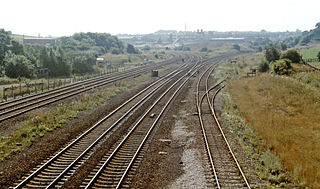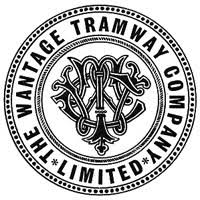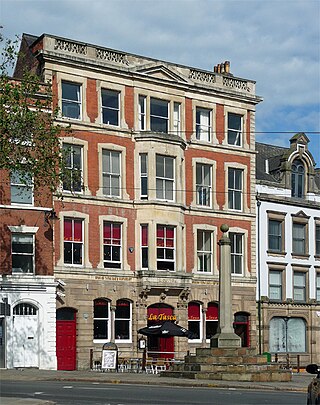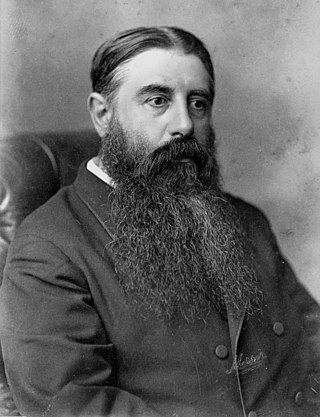Related Research Articles

The Midland Railway (MR) was a railway company in the United Kingdom from 1844. The Midland was one of the largest railway companies in Britain in the early 20th century, and the largest employer in Derby, where it had its headquarters. It amalgamated with several other railways to create the London, Midland and Scottish Railway at grouping in 1923.

Clay Cross railway station was a railway station built by the North Midland Railway in 1840. It served the town of Clay Cross in Derbyshire, England.

The NZR A class of 1873 consisted of three types of steam locomotives used on New Zealand's railway network of similar specification but differing detail. The first and most numerous were from the Dübs and Company, the next from the Wellington firm E.W. Mills Lion Foundry, and the last from the Scottish firm of Shanks. The specifications are for the Dubs Yorkshire engines.

The Severn and Wye Railway began as an early tramroad network established in the Forest of Dean to facilitate the carriage of minerals to watercourses for onward conveyance. It was based on Lydney, where a small harbour was constructed, and opened its line to Parkend in 1810. It was progressively extended northwards, and a second line, the Mineral Loop was opened to connect newly opened mineral workings.
The Great Northern and London and North Western Joint Railway was a British railway line, almost entirely within Leicestershire. Authorised by the same Act of Parliament, the Great Northern Railway Leicester Branch was built, branching from the Joint Line; on the same basis the Newark to Bottesford Line was built. The lines opened progressively between 1879 and 1883. The dominant traffic was iron ore, and the agricultural produce of the area served also generated considerable business. The passenger usage was never heavy, although some unusual through services were attempted at first.

The Wantage Tramway Company was a two-mile tramway that carried passengers and freight between the Oxfordshire town of Wantage and Wantage Road Station on the Great Western Main Line in England. Formed in 1873 to link Wantage Road station with its terminus at Mill Street, Wantage the line was cheaply built parallel to what was then the Besselsleigh Turnpike, and now the A338. The tramway closed to passengers in 1925 and to goods traffic in 1945.

Leicester Corporation Tramways was a tramway system in Leicester, England from 1901 to 1949.

The Northampton Street Tramways Company operated a horse powered tramway service in Northampton between 1881 and 1901.

Wolverhampton Corporation Tramways operated a tramway service in Wolverhampton between 1902 and 1928.
Wolverhampton Tramways Company operated a tramway service in Wolverhampton between 1878 and 1900.

John Holloway Sanders FRIBA was an architect based in England and chief architect of the Midland Railway until 1884.

William Arthur Heazell FRIBA was an architect based in Nottingham.

Stockdale Harrison FRIBA was an architect based in Leicester best known for Usher Hall, Edinburgh.

John Collyer was an architect based in Nottingham.
William Lancaster Owen was a British civil engineer primarily with the Great Western Railway.

The Vogel Era describes the history of New Zealand between 1873 and 1876, when the country adopted an immigration and public works scheme inaugurated by the colonial treasurer, then premier, Julius Vogel to develop the country and to relieve the slump of the late 1860s; to be financed by borrowing overseas. His "Great Public Works Policy" resulted in a large increase in migrants and provision of many new railways, roads and telegraph lines. The railway system developed from a few lines in three gauges to the start of a national network including the main line from Christchurch to Dunedin, though the narrow "Cape gauge" required later upgrading to increase the restricted height and weight limits.
The Staffordshire Potteries Street Railway operated a horse-drawn tramway service between Hanley and Burslem from 1862 to 1880.
The North Staffordshire Tramways operated a steam tramway service from 1881 to 1898 in the Staffordshire Potteries area.
The Old Swan Tramway operated a horse-drawn tramway service in Liverpool from 1861 to 1862.

James Tait FRIBA FRIBA was an architect based in Leicester.
References
- ↑ "Board of Trade Session 1873. Leicester Tramways" . Leicester Journal. England. 22 November 1872. Retrieved 22 December 2022– via British Newspaper Archive.
- ↑ "Local Topics" . Leicester Journal. England. 6 September 1873. Retrieved 22 December 2022– via British Newspaper Archive.
- 1 2 UK Retail Price Index inflation figures are based on data from Clark, Gregory (2017). "The Annual RPI and Average Earnings for Britain, 1209 to Present (New Series)". MeasuringWorth. Retrieved 11 June 2022.
- ↑ "Opening of the Leicester Tramways to Belgrave" . Leicester Daily Post. England. 24 December 1874. Retrieved 22 December 2022– via British Newspaper Archive.
- ↑ "Opening the Humberstone-Road Tramways" . Leicester Journal. England. 26 March 1875. Retrieved 22 December 2022– via British Newspaper Archive.
- ↑ "The Leicester Tramways" . Leicester Chronicle. England. 21 August 1875. Retrieved 22 December 2022– via British Newspaper Archive.
- ↑ "Trial of a Tram Car Locomotive in Leicester" . Hinckley News. England. 1 April 1876. Retrieved 22 December 2022– via British Newspaper Archive.
- ↑ "The Tramways" . Leicester Daily Mercury. England. 20 August 1878. Retrieved 22 December 2022– via British Newspaper Archive.